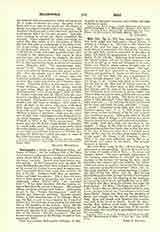

Helenopolis, a titular see of Bithynia Prima, suffragan of Prusa. On the southern side of the Sinus Astacenus was a place known as Drepana or Drepanon, where about 258 St. Helena, mother of Constantine the Great, was born. Near it were some famous mineral springs. In 318 Constantine gave the place the name Helenopolis, and built there a church in honor of the martyr St. Lucian; it soon grew in importance, and Constantine lived there very often towards the end of his life. Justinian built there an aqueduct, baths, and other monuments. Yet it does not seem ever to have grown in prosperity, and hence it was slightingly called Eleinou Polis, “the wretched town”. It has been identified with the modern village of Hersek in the vilayet of Broussa. The mineral springs are those of Coury near Yalova. Helenopolis occurs in the “Notitiae Episcopatuum” until the twelfth and thirteenth centuries. Lequien (Oriens Christ., I, 623) mentions nine of its bishops; Macrinus, the first, is said to have been at the Council of Nicaea (325), but his name is not given in the authentic lists of the members of the council. About 400 the church of Helenopolis was governed by Palladius, the friend and defender of St. John Chrysostom, and author of the famous “Historia Lausiaca”. The last known bishop assisted at the Photian Council in Constantinople (879).
There was another Helenopolis, suffragan of Scythopolis in Palestina Secunda; and a third, suffragan of Sardes in Lydia.
S. PETRIDES

